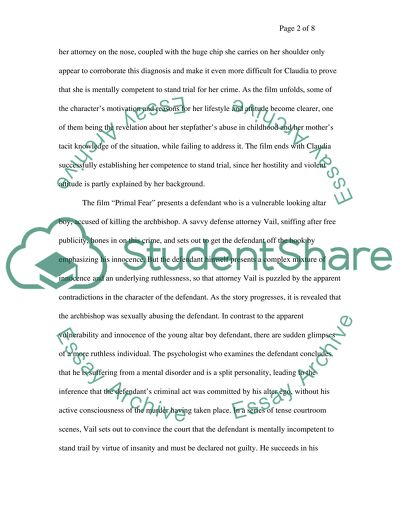Cite this document
(How Has the Insanity Defense Been Used in the Films Primal Fear and Nu Movie Review, n.d.)
How Has the Insanity Defense Been Used in the Films Primal Fear and Nu Movie Review. Retrieved from https://studentshare.org/visual-arts-film-studies/1547792-mental-health-laws-in-the-movies-primal-fear-and-nuts
How Has the Insanity Defense Been Used in the Films Primal Fear and Nu Movie Review. Retrieved from https://studentshare.org/visual-arts-film-studies/1547792-mental-health-laws-in-the-movies-primal-fear-and-nuts
(How Has the Insanity Defense Been Used in the Films Primal Fear and Nu Movie Review)
How Has the Insanity Defense Been Used in the Films Primal Fear and Nu Movie Review. https://studentshare.org/visual-arts-film-studies/1547792-mental-health-laws-in-the-movies-primal-fear-and-nuts.
How Has the Insanity Defense Been Used in the Films Primal Fear and Nu Movie Review. https://studentshare.org/visual-arts-film-studies/1547792-mental-health-laws-in-the-movies-primal-fear-and-nuts.
“How Has the Insanity Defense Been Used in the Films Primal Fear and Nu Movie Review”. https://studentshare.org/visual-arts-film-studies/1547792-mental-health-laws-in-the-movies-primal-fear-and-nuts.


